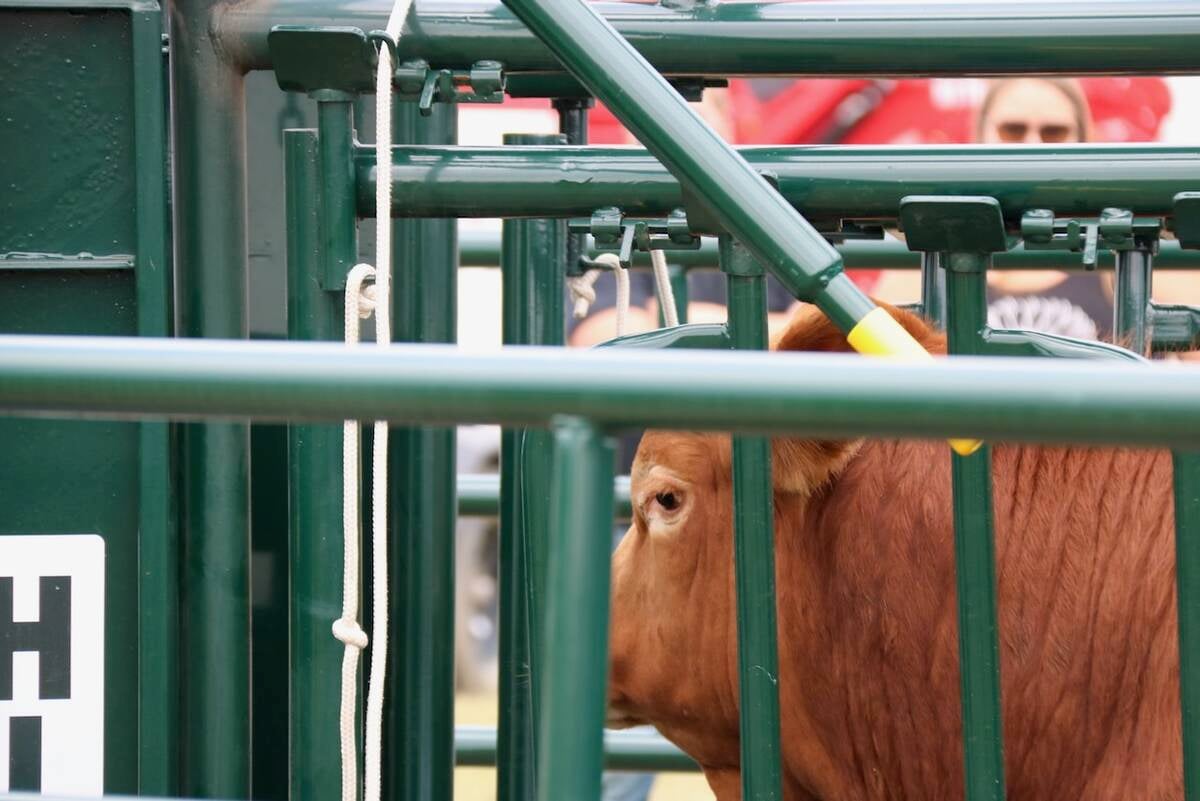Canadian counterparts are benefitting from the low dollar, high prices and good export demand
North American cattle prices have been at a record highs for the last four quarters, but the party may soon be over if Canadian market trends follow what’s happening in the United States.
Those expensive feeder cattle placed in U.S. feedlots last fall are being sold at huge losses.
Based on the cash market without price management strategies, U.S. feedlots are losing more than $150 per head, said a report from agriculture economist Glynn Tonsor of Kansas State University.
The same thing may happen in Canada as record prices are paid for cattle to fill feedlots.
Read Also

Good handling equipment a must on cattle operations
It’s important for the safety of producers and everyone else dealing with their stock that handling equipment is functional and safe.
“If you place that 850 pound steer, we are looking at potentially a loss of $50 per head,” said Brian Perillat of the marketing firm Canfax.
“We definitely have to be cautious given these margins. The futures market is anticipating prices to drop. The dollar is rallying a little bit right now and guys have just spent record prices on calves again,” he said.
Tonsor’s analysis found the February close out on fattened steers resulted in a loss of $135 per head, while heifers lost $121 per head.
In March, steers lost $117 per head and heifers lost $155 each. Based on high cattle prices and cost of gain, losses could continue at an escalating rate on fed cattle.
The website agweb.com had losses by mid April of more than $200 per head compared to last year, when those cattle were making nearly $250 each.
According to agcenter.com, if a 750 lb. steer purchased for $1,620 last fall sold for $2,170 on the cash market this spring, it probably resulted in a $150 loss once cost of gain and other expenses were deducted.
An 82 cent dollar and improved basis places Canada in an unusual position where cattle are trading at a premium to the U.S.
“In the short term right now we continue to see our fed cattle prices go higher. A big part of that is thanks to the dollar,” said Perillat.
Canada is also experiencing a change in the basis.
“Usually we are at a discount to U.S. prices. We are at a huge premium. That is another big bonus to cattle feeders. We were trading $7 higher to Nebraska. We have rarely gotten even to their prices,” he said.
The cash market is just part of the story. More cattle are marketed through contracts and that can provide some protection against volatility.
However, those who signed contracts probably made less money, but still locked in a profit.
“Contracts are based off the futures market adjusted for the dollar and plus or minus whatever the basis is. The futures right now are at such a discount to the cash that there are guys who haven’t done as much contracting going forward because they can’t contract a very good price,” Perillat said.
Canada does not have a futures market like the U.S., but producers can take advantage of the Western Livestock Price Insurance Program to manage risk.
It covers calves, feeder and fed cattle and offers a hog program for price protection.
So far this year, uptake on the program has not been as high as previous years, said Brenda Hagen of Alberta Financial Services Corporation.
That’s probably due to the kind of money paid for cattle. Most recently, Canfax reported good cows trading at $150 per hundredweight, 500 lb. steers averaging $350 per cwt and 800 lb. steers at around $275 per cwt.
Even at those high prices, demand for cattle remains high and large numbers have been exported, leaving Canadian packers struggling to operate at capacity.
The cost of gain may determine where cattle go.
“This spring we have exported huge numbers of feeder cattle and that was purely because of the cost of gain disadvantage. Corn really dropped and barley has been rallying through the winter for the most part,” Perillat said.
Profitability may encourage some Canadian expansion.
“We might be starting our expansion walk. It won’t be a run,” he said.
Breeding stock prices are increasing. Good premiums were paid for breeding heifers and fewer cow dispersals happened this past year. Bull sales posted record averages.
“Some of the preliminary data is showing we are finally getting an appetite to expand,” he said.















